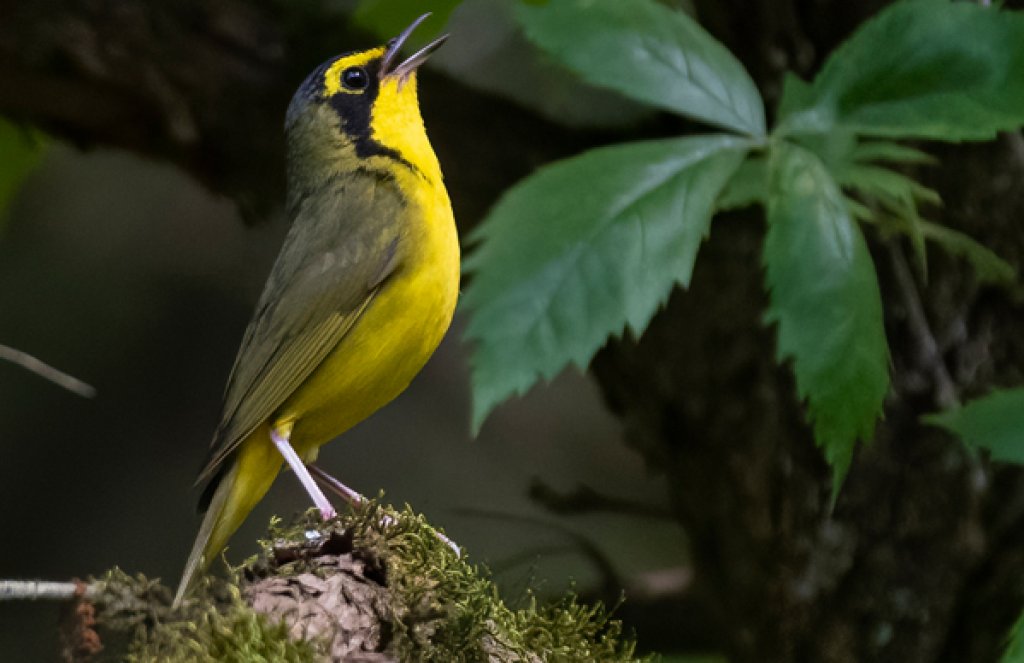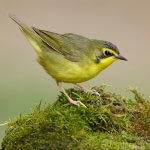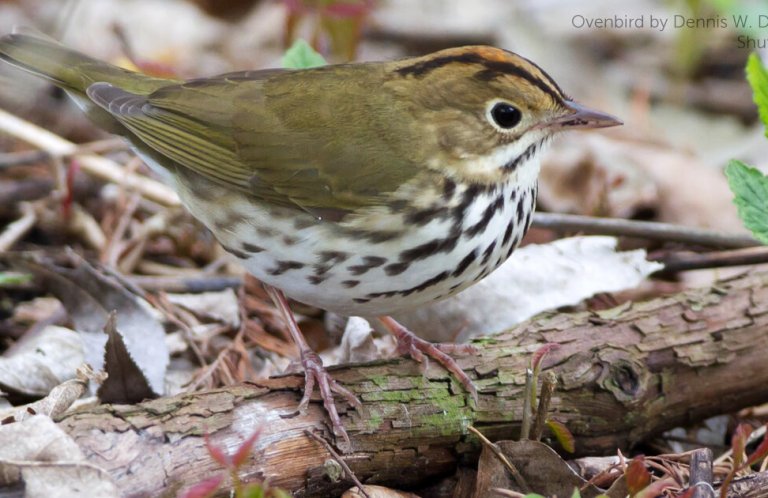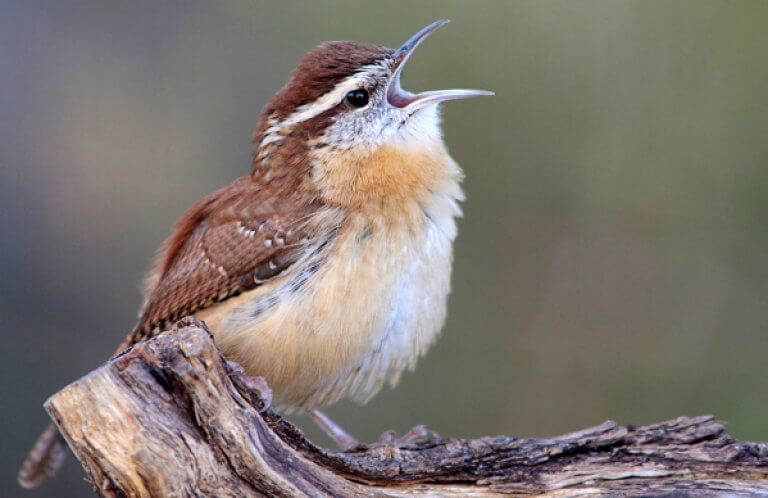About the Kentucky Warbler
The furtive, beautiful Kentucky Warbler is a sought-after springtime sighting throughout the eastern U.S. Like the Wood Thrush and Ovenbird, this inhabitant of deep, damp forests is more often heard than seen.
A patient observer may eventually track the song to its source: a long-legged, short-tailed bird colored olive-green above and bright lemon-yellow below, with bright yellow “spectacles” and a distinctive black facial pattern that makes the bird look like it has sideburns. The Kentucky Warbler's scientific name, Geothlypis formosa, translates to “beautiful earth-finch,” and aptly describes its ground-nesting and dwelling habits.
Although widely distributed, this lovely warbler is becoming increasingly scarce throughout eastern U.S. forests.
Declining Due to Deer
One of the biggest threats to the Kentucky Warbler is habitat loss and degradation, particularly the disappearance of forest understory caused by the browsing of over-abundant White-tailed Deer. These hungry herbivores also spread the seeds of fast-growing invasive plants such as Japanese Stiltgrass, which smother native groundcover species, turning formerly inviting ground-nesting bird habitat into a barren monoculture. In a one-two punch, the Kentucky Warbler has also had to contend with habitat loss on its wintering grounds. Partners in Flight has placed the Kentucky Warbler on its Yellow Watch List of declining birds, noting a 29 percent drop in population between 1970 and 2014.
Songs and Sounds
The male Kentucky Warbler has a rich, rolling song: "churry churry churry." While defending nesting territory, a male will sing persistently, repeating itself as often as once every 12 seconds.
This rollicking song can be easily confused with that of the Carolina Wren. Song quality and clarity differ, with the “syllables” of the Kentucky's two-note song phrases almost blurring together, unlike the wren's usually distinct notes.
Listen below and see if you can hear the difference!
Kentucky Warbler:
Carolina Wren:
Breeding and Feeding
At Home on the Forest Floor
While courting, male and female Kentucky Warblers chase each other while uttering loud, rapid chip notes. Once mated, the female selects a nest site on the ground near the base of a tree, or near ground level in a thick shrub. Both sexes build the open cup nest out of dead leaves lined with soft grasses, hair, and rootlets. The female alone incubates, but the male helps to feed the young once they hatch.

Like other ground-nesting songbirds such as the Kirtland's Warbler, nests of Kentucky Warblers are frequently parasitized by Brown-headed Cowbirds, especially in fragmented forests, which give the cowbirds easy access.
Scratching Up a Meal
The Kentucky Warbler forages on the ground on long, pink legs, searching for grubs, spiders, caterpillars, and other invertebrates. It probes forest litter by tossing leaves aside with its bill and scratching with its feet. It may also ascend into shrubs, vines, and the lower parts of trees to glean insects. Like the Bay-breasted Warbler and many other warbler species, the Kentucky Warbler may also add small fruits to its diet during the winter.
Kentucky Warblers often follow swarms of army ants while on their nonbreeding grounds, snapping up invertebrates fleeing the swarm. This foraging tactic is commonly used by many resident species of humid tropical forests, such as antbirds and the Fan-tailed Warbler, among others. Kentucky Warblers will defend a small foraging territory during the winter, fiercely driving away others of their kind.
Region and Range
A Liking for Lowland Forests

During its breeding season, the Kentucky Warbler can be found in deep, deciduous forests in the East, with populations typically denser and more widespread west of the Appalachians. It requires forest with a dense understory, usually close to water such as creeks, rivers, and swamps. It seeks similar lowland and lower foothill forest habitat on its wintering grounds in Mexico, Central America, and extending as far south as Venezuela and Colombia. While it has been recorded from most Caribbean islands during winter, it is generally rare.
Conservation of the Kentucky Warbler
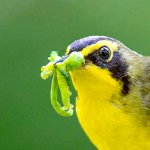
Help support ABC's conservation mission!
ABC is involved in a number of large-scale conservation initiatives that benefit Kentucky Warblers, including BirdScapes, Joint Ventures, and Southern Wings. All of these programs concentrate on the protection, recovery, and enhancement of suitable habitat on the Kentucky Warbler's breeding and wintering grounds.
Other ABC initiatives tackle threats affecting all birds, including our Cats Indoors program, which encourages pet owners to keep cats and birds safe, and our Glass Collisions program, which offers solutions to keep migrating birds from hitting windows.
Get Involved
Policies enacted by the U.S. Congress and federal agencies, such as the U.S. Fish and Wildlife Service, have a huge impact on migratory birds. You can help shape these rules for the better by telling lawmakers to prioritize birds, bird habitat, and bird-friendly measures. To get started, visit ABC's Action Center.
Living a bird-friendly life can have an immediate impact on migratory birds in the United States. Doing so can be as easy as adding native plants to your garden, avoiding pesticides, and keeping cats indoors. To learn more, visit our Bird-Friendly Life page.
American Bird Conservancy and our Migratory Bird Joint Venture partners have improved conservation management on more than 8.5 million acres of U.S. bird habitat — an area larger than the state of Maryland — over the last ten years. That's not all: With the help of international partners, we've established a network of more than 100 areas of priority bird habitat across the Americas, helping to ensure that birds' needs are met during all stages of their lifecycles. These are monumental undertakings, requiring the support of many, and you can help by making a gift today.





































